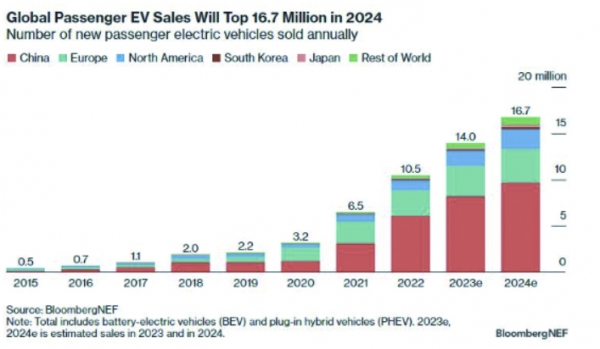
A historical fire caused by the Mercedes-Benz electric vehicle (EV) explosion remained ablaze for eight hours, damaging over 140 cars and residential property. Fortunately, there were no casualties. What is particularly unusual is that the vehicle caught fire from a stationary EV parked in an underground parking lot. The EV was not even plugged into the charger at the time of the explosion. The recent incident has sparked worries about the batteries used in EVs, and phobia towards EVs is spreading throughout South Korea.
On Aug. 1, at approximately 6:08 A.M., a fire erupted in a Mercedes-Benz EQE sedan parked in the first basement of a residential apartment in Cheongna International City, Incheon. The Incheon Fire Department reported that a fire receiver detected the fire immediately after the vehicle burst into flames at 6:09 A.M. However, a worker in the apartment management office had turned off the pre-action valve, a safety device that operates the sprinkler system only when a fire is detected. Even if an accident occurs once a million times, effort must be made for all the other cases for the sake of that one time. Unfortunately, the valve was deactivated, and the sprinkler system did not activate during the explosion.
The exact cause of the fire in the vehicle remains unclear. Usually, lithium batteries are composed of components like the cathode, anode, separator, and electrolyte. If the cathode and anode come into contact or the battery is overheated for some other reason, a thermal runaway explosion may occur. When such fire occurs, temperatures can reach 600 to 1000 degrees Celsius, making the fire difficult to extinguish.
The fire spread to other vehicles, growing uncontrollably. The fact that the fire occurred underground significantly complicated the situation, making it difficult for firefighters to access the area immediately.
Due to the high fire temperature lasting for an extended period, the apartment’s pipes, circuits, and various other facilities melted. The residents were relocated to state-run residential facilities, supplied with food and essential daily items.
Mathias Vaitl, the CEO of Mercedes-Benz Korea, met with approximately 150 residents 13 days after the incident. At the meeting, Mercedes-Benz Korea expressed deep regret and announced a donation of 4.5 billion KRW to support the residents affected by the Benz EV, leaving the possibility for further humanitarian support. He said that the company would respond based on the investigation’s results and the root cause of the fire.
The National Forensic Service, Incheon Metropolitan Police, and Incheon Seobu Fire Station conducted a detailed forensic investigation of the cells and modules within the battery pack of the EV involved in the fire. Representatives from Mercedes-Benz also participated. Some experts anticipate difficulties in accurately determining the exact cause of the fire as the Mercedes-Benz EQE sedan was completely burned with severely damaged major components, as shown in the embedded photo.
While the exact cause is being investigated, the likelihood that the battery was at fault remains a significant concern. EV catching fire while neither driving nor charging has caused a phobia.
Although the probability is low, the potential for accidents has sparked conflicts over whether it is safe to park EVs underground. Some apartments are banning EVs from entering underground parking lots. Some say EVs are being treated unfairly simply because others fear an event that is most likely to not happen.
The phobia triggered by this fire could significantly impact the government and local authorities’ policy of expanding the distribution of eco-friendly EVs. The government and local authorities, which have mainly focused on increasing the number of EVs, are now taking proactive measures. They are facing criticism for preparing fire safety measures in hindsight, but they are now holding a meeting involving relevant ministries such as the Ministry of Environment, Ministry of Land, Infrastructure and Transport, and the National Fire Agency. They plan to announce a comprehensive plan for EV fires in September, which should provide a sense of safety to the public.
This incident is likely to negatively impact the rapidly growing domestic EV market. In response, EV brands have voluntarily disclosed their battery manufacturers, which were previously regarded as secrets. The battery in the Mercedes-Benz EQE sedan that caused the fire was a product of Farasis Energy, a China-based company.
With the recent rise in attention to EV fires, gas-powered car fires are also gaining attention. Statistically, the likelihood of a fire occurring is similar. According to the National Fire Agency, the fire occurrence rate for EV is 0.013% while gasoline and diesel vehicles recorded 0.006% and 0.015%.


